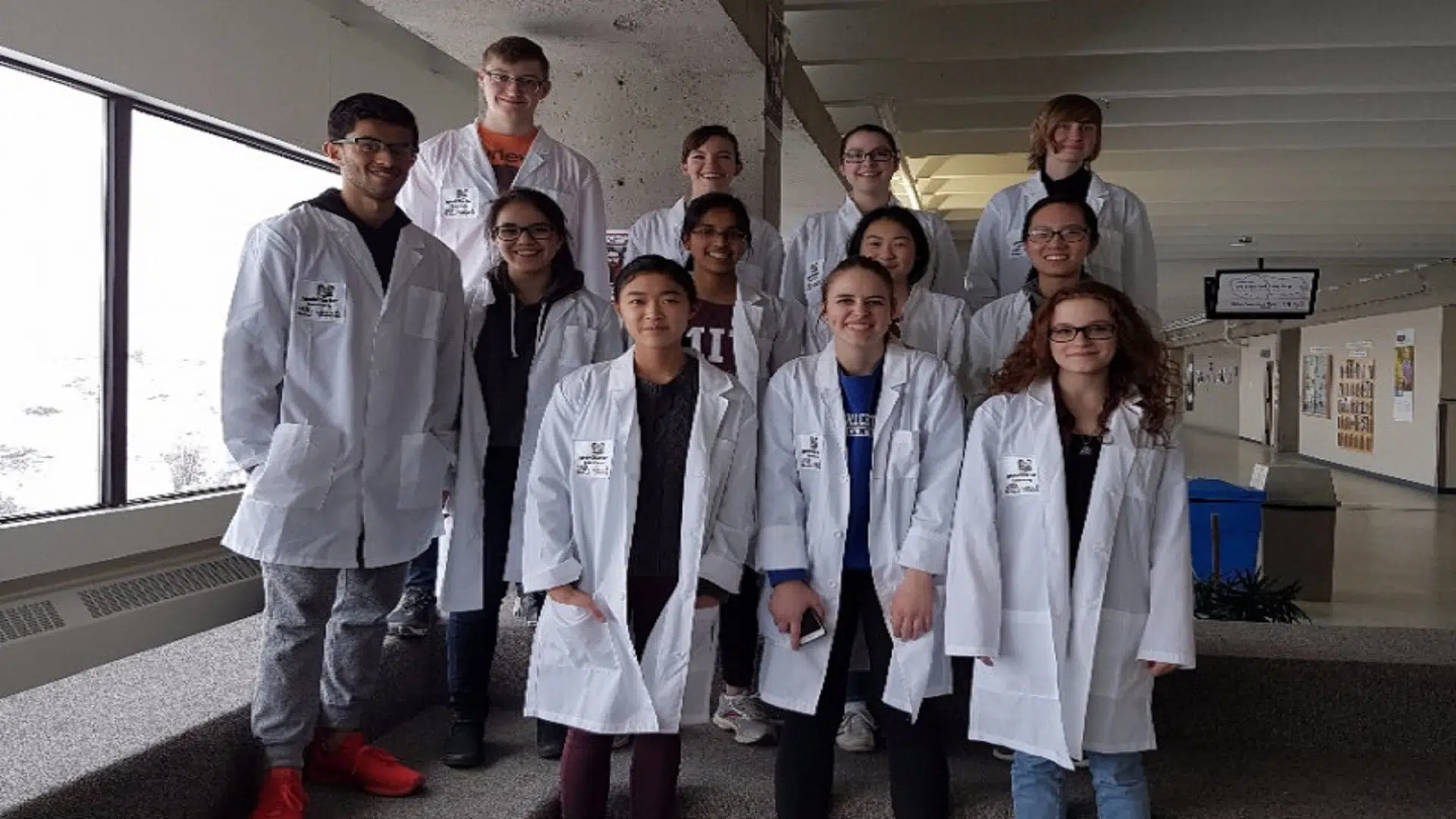
High-school iGEM team earning awards ahead of competition
LETHBRIDGE – Given the cost of printer ink and the environmental consequences of its manufacture, this year the University of Lethbridge high school iGEM team has chosen a project that might solve both problems.
“Our project is the development of biological pigment for use in the manufacturing of ink,” says Erin Kelly (BSc ’17), a U of L master’s student and graduate student coordinator of the High School iGEM team. “We found that the manufacturing of the pigment in the ink can actually be a harmful process to the environment, as well as being quite costly.”
The project will use synthetic biology to create pigment substitutes — like the black, cyan, magenta and yellow found in printer ink — that can be found in nature. Synthetic biology is the design and construction of new biological entities, which can be enzymes, genetic circuits or cells, by redesigning existing biological systems. Currently, the pigment in black ink is obtained by burning petroleum while other pigments are chemically synthesized or come from minerals that are mined.
“Other pigments we’re using are found in different types of flowers,” says Sydnee Calhoun, a biochemistry student, team advisor and member of the Collegiate iGEM team. “For example, the magenta pigment we’re using is found in apple trees.”


